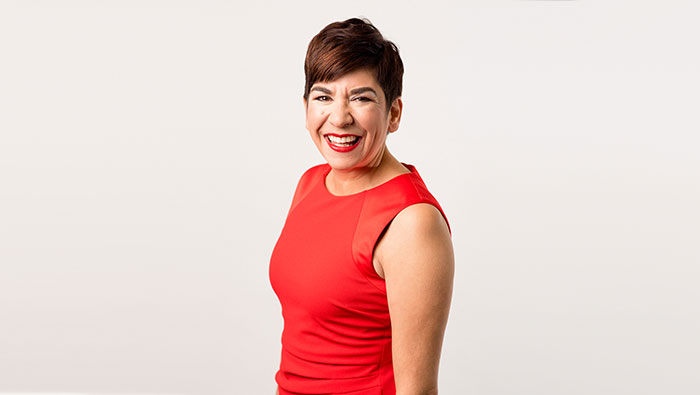Real Woman Alumni 2018-2019 Laura Pugh

After waking up “a new person” following a devastating stroke, Seattle woman sets ambitious half marathon goal for rehabilitation.
Laura Pugh was under tremendous stress. The hard-charging Bay Area sales rep was working long hours and recovering from the trauma of a home break-in.
Pugh woke up three days before Christmas 2013, mentally ticking off her to-do list before a flight to Colorado to join family for the holidays. But when she reached for the alarm, her right arm felt tingly and she couldn’t open or close her hand. Once she tried to stand, she collapsed. And the reflection in the bathroom showed that the right side of her face was drooping. She tried raising both arms and watched the right side droop.
Panicked, she stumbled back to bed to Google stroke symptoms.
“I had all the symptoms except slurred speech,” she said. “I went to bed one person and woke up another.”
Getting immediate treatment for a stroke is critical, but instead of calling 911, Pugh called her mom, who lived 90 minutes away. The look on her mom’s face when she arrived confirmed that the situation was serious.
“That’s when I got really scared, because my mom is one cool customer,” she said.
The women drove to the hospital where tests showed that Pugh, who was 38, had experienced an ischemic stroke, news that devastated Pugh.
Stroke is the No. 5 cause of death and a leading cause of serious long-term disability. Women have a higher lifetime risk of stroke than men, and about 55,000 more females than males have a stroke each year.
Doctors told Pugh that stress-related high blood pressure, treated four years earlier, may have triggered the stroke. High blood pressure is the second leading cause of preventable heart disease and stroke death — second only to smoking. About 50 million U.S. women have high blood pressure, and five million of them are Hispanic.
When Pugh was discharged two days after her stroke, she couldn’t walk more than a few steps on her own or use her dominant right hand. She was determined to regain her strength, especially after a doctor told her she would “be lucky to get to 65 percent of where she was.”
“All I could think was, ‘He doesn’t know what I’m capable of,’” Pugh said.
Before her stroke, Pugh had won a lottery to participate in the Nike Women’s Half Marathon in Washington, D.C., scheduled that spring. Now all she could think was how to get her body strong enough to complete it.
Pugh started building stamina by walking in her house and doing exercise DVDs. Despite a few weeks of training, distances she used to walk in 15 minutes took 2 hours, but the incremental progress spurred her to do even more.
After a month, she returned to work part-time and used a treadmill at her office to continue to get stronger, fitting in extra steps wherever she could and taking the stairs instead of the elevator.
She also joined survivor groups on social media and through the American Heart Association, finding forums that helped keep things in perspective.
“Even though my body hurt, and I was exhausted, I reminded myself that I was still stronger than I was the day before and I was alive,” she said.
On April 27, 2014, just four months after her stroke, Pugh reached her goal and finished the half marathon. The following year, she completed a full marathon in Paris, France, dedicating it to stroke survivors and using social media to track her training and race.
Today, she’s largely recovered from her stroke. She has become a fierce advocate for recognizing the signs of stroke and calling 911 if you suspect you or someone else is having one.
Now 43, Pugh and her husband live in Seattle and have two dogs, which have helped Pugh manage anxiety following her stroke, as well as keep her active.
“I always had a lot of energy, but I have to remind myself that I need to slow down,” she said. “Tomorrow is promised to no one, so it’s important that you put yourself first.”





